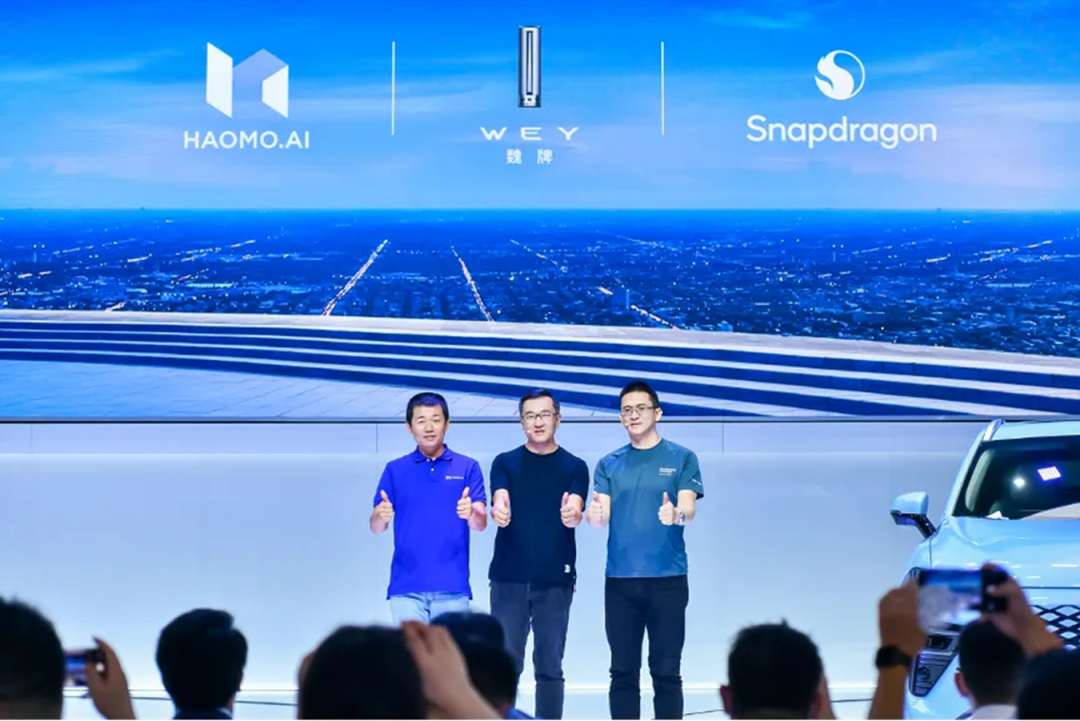Author | Zhu Shiyun
This is a “war” of technology between WM Motor and XPeng Motors, as well as WM Motor’s own upward battle.
At the Chengdu Auto Show on August 26th, WEY, a high-end brand under Great Wall Motors, unveiled its first model equipped with the City NOH driving assistance system – the Mocha DHT-PHEV LiDAR version, and will start mass production in late September. This will be a delicate timing. XPeng Motors, another hot “player” in the landing urban autopilot market, announced earlier that it will launch the NGP function in the second half of the year, and the first model to be most likely equipped with this function, the XPeng G9, will be launched in September.
WEY hopes to deliver the Mocha DHT-PHEV LiDAR version to customers ahead of XPeng Motors, becoming the first mass-produced vehicle with a City driving assistance system in China, and thereby becoming the first mass-produced brand in China with the ability to connect high-speed and urban driving assistance.
What is behind WEY’s challenge to XPeng Motors? Has the City driving assistance system’s ability truly reached the mass production stage?
WEY and XPeng Motors are on the same technical roadmap
The reason why WEY, a traditional brand, can compete with XPeng Motors, which is labeled as “intelligent driving”, for the first mass-produced title of urban intelligent driving essentially lies in the convergence of the technical solutions for L3 and even L4 level intelligent driving system in the industry.
“Each sensor has its own advantages and disadvantages.” Pan Xing, the Director of the Moov Intelligent Driving Technology Division, told “Electric Vehicle Observer” that “LiDAR’s advantages lie in extremely accurate ranging and 3D information, while the texture information of vision (camera) is very rich. Therefore, the ceiling of (the perception ability of vision) is higher than that of LiDAR, but its data requirements are also extremely high, requiring not only a massive amount of data but also a high investment in constructing a data loop.”
“Therefore, research and development engineers must consider how to leverage advantages and avoid disadvantages. (Our) solution can maximize the strengths of LiDAR and vision under the current hardware conditions and computing power.”
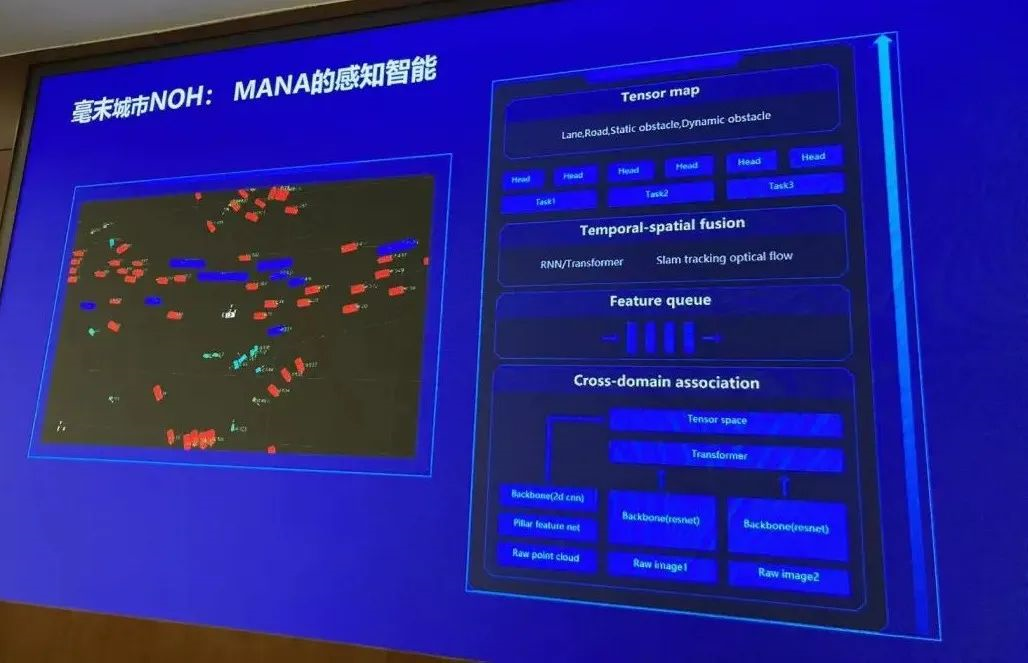
“This solution” refers to the fusion of LiDAR and BEV (Bird’s Eye View) surround sensing algorithm using Transformer algorithm to form a basic vector space; “Feature queue” and “Temporal-spatial fusion” two-level model modules align the vector space in time and space perception to form a unified time and space queue; in this time and space queue, recognition and labeling are carried out based on the three major task systems of global, road, and target, resulting in a vector map capable of planning driving sequences.“”Observer of Electric Vehicles” has learned that: Currently, the perception solutions for high-level intelligent/autonomous driving mass production systems, including city navigation, which adopt high computing power, high perception (camera + LiDAR), and rely on big data iteration, are mostly similar to this one.
This solution can effectively reduce reliance on data and deep learning, quickly obtain distance and depth information through LiDAR, and rapidly implement the functions accordingly. However, the difficulty lies mainly in temporal and spatial alignment of LiDAR point clouds and visual images, two completely different types of information, making them mutually corroboration (fusion in the middle or back), or even complement each other (front fusion).
“How to achieve alignment” mainly depends on algorithmic ability.
The already converging and clear technological route, gradually determines the leading hardware supplier for head enterprises, as well as the competitive factor of initial data and algorithm coexistence. This has given MoreThan, a company that has been established for only just over two years (2019), and Xpeng Motors (2014), the opportunity to compete for the first launch, in the highly challenging field of city navigation.
Whether it is to make up for the time gap or to provide enough redundancy for the future, WEY has created a more “luxury” hardware system for the Mocha DHT-PHEV LiDAR version:
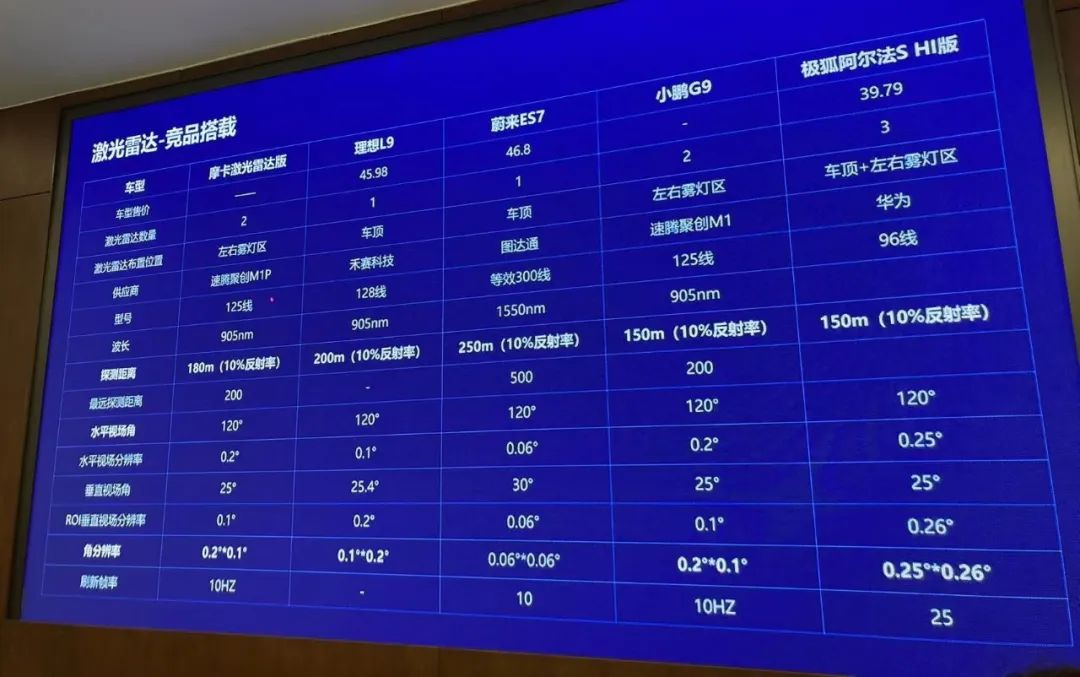
Equipped with 2 sets of 125-line LiDAR, 5 mm-wave radars, 12 ultrasonic radars, and 12 cameras, totaling 31 perception components. The number of LiDAR lines and the distance, and the pixel of the high-precision camera are all leading in the industry.
Using the Snapdragon Ride platform, it is the first launch of the 8540 (5nm) + 9000 (7nm) solution, and the computing power reaches 360TOPS. Meanwhile, a separate MCU is set as the redundant system. Considering that most of its counterparts in the industry adopt a solution of a single or two Nvidia Orin chips with 254TOPS and redundant backup, WEY’s main computing power is also larger.
“If it’s just normal driving on relatively smooth roads, everyone’s performance is about the same.” Pan Xing said: “Considering some extreme road conditions, such as many intersections, the number of lanes at the entrance changes rapidly, the unclear bus stops located on the road, etc., stronger perception capability will bring us a better user experience.”
Can mass-produced city navigation assist reliably?
Clear technological route and rich hardware system is one thing, but actually hitting the road is another.
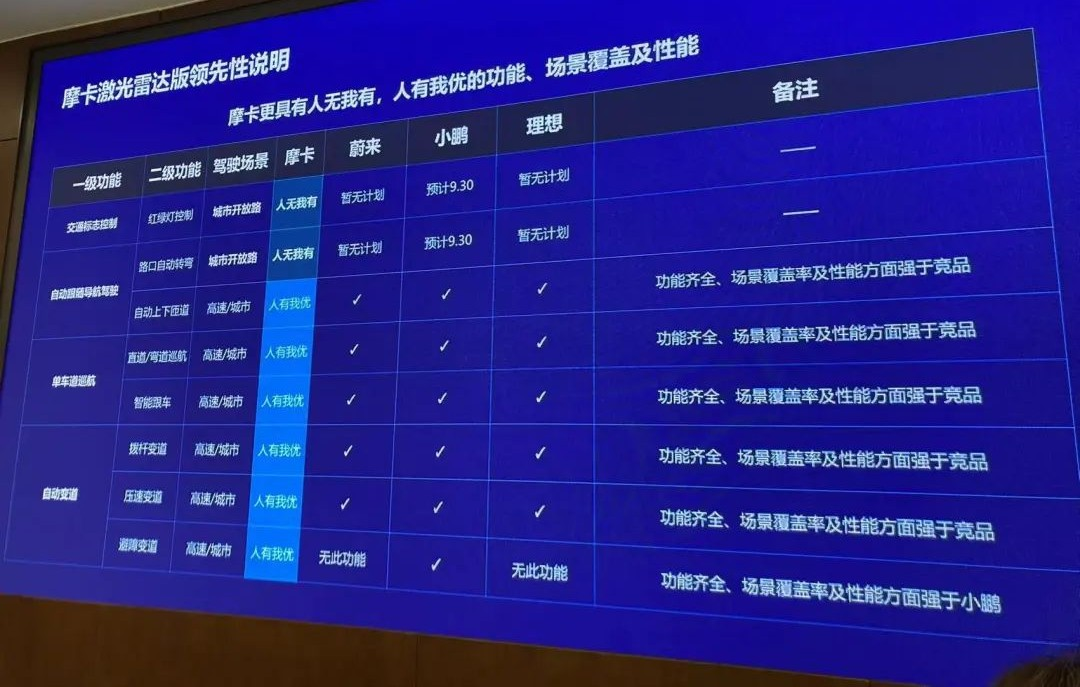 # WeiPai “Mass Production in Cities NOH” refers to the system’s ability to automatically change lanes for passing and overtaking, recognize and control traffic lights, navigate through complex intersections and make unprotected left and right turns in urban environments based on the driving route provided by the navigation system. It also assists drivers in driving tasks on main roads and secondary roads, such as open city roads, highways, and fast lanes following the navigation route. This includes automatic on and off ramps, cruising on straight and curved roads, intelligent following, pulling rod lane changes, speed reduction lane changes, obstacle avoidance lane changes, and other high-speed and urban major application scenarios.
# WeiPai “Mass Production in Cities NOH” refers to the system’s ability to automatically change lanes for passing and overtaking, recognize and control traffic lights, navigate through complex intersections and make unprotected left and right turns in urban environments based on the driving route provided by the navigation system. It also assists drivers in driving tasks on main roads and secondary roads, such as open city roads, highways, and fast lanes following the navigation route. This includes automatic on and off ramps, cruising on straight and curved roads, intelligent following, pulling rod lane changes, speed reduction lane changes, obstacle avoidance lane changes, and other high-speed and urban major application scenarios.
According to official data from WeiPai, the system’s intersection pass rate is over 70%, its lane changing success rate is over 90%, and its traffic flow processing capacity reaches level 4.
According to the plan, WeiPai’s City NOH will first support Beijing and Baoding, and will cover more than 10 cities by the end of 2022, with plans to quickly expand to over 100 cities.
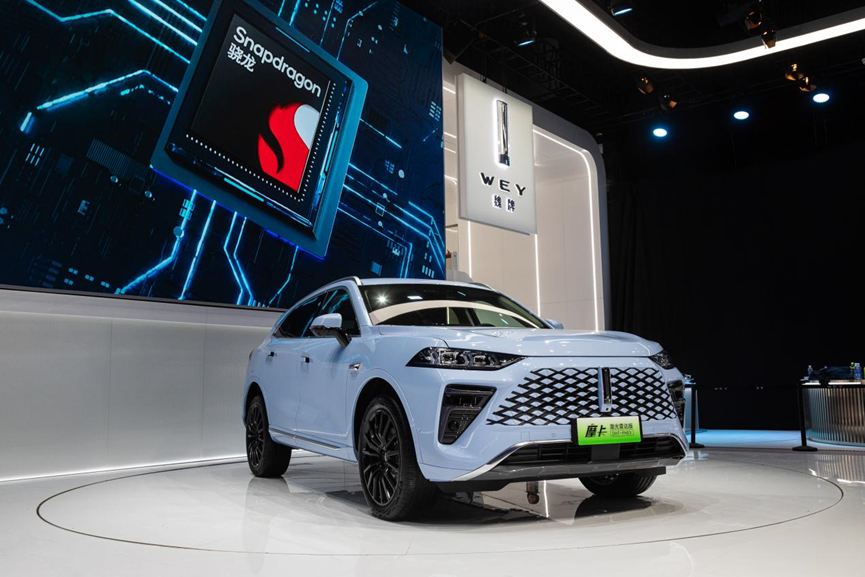
Many companies have demonstrated similar features in their prototype vehicles, but what are the mass production standards for moving from a demo to large-scale use? This has been unclear in the industry.
In response, Pan Xing told Electrek that WeiPai has strict acceptance criteria for system engineering stability. This includes the software running normally without crashing, and the hardware working stably without failure, all of which conform to strict vehicle-grade standards.
From the perspective of algorithm effectiveness, the maximum distance between two takeovers in the city is generally still less than one kilometer. “We hope to continuously improve this indicator after solving complex traffic conditions such as entrance conditions.”
In addition, the targeted introduction of LiDAR technology will further enhance the reliability of WeiPai’s City NOH.
The Mocha DHT-PHEV uses two M1P LiDARs with a bottom-installed design to balance aerodynamics and improve perception of nearby low-lying obstacles, and improve collision prevention. The 170-degree FOV coverage also provides more function support for City NOH, such as close-range cut-in and forward obstacle crossing, with higher safety redundancy.
The Battle between Momenta and XPeng’s System Framework
In fact, the significance of who first mass-produces and lands the product lies in the “first-mover advantage” of its promotional effect. What really matters is the system’s availability, reliability, and future growth after mass production and implementation.
The availability and growth potential of advanced intelligent driving assistance systems fundamentally depend on the system’s ability to process and iterate on data at scale. This persistent battle will be fought between Momenta and XPeng.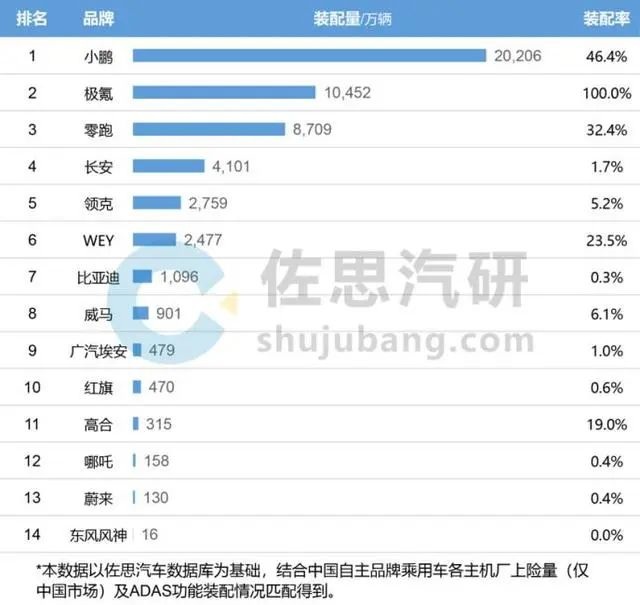
In terms of data, there is a significant gap between Hozon and XPeng. Currently, Hozon’s HPilot has been installed on 6 popular models of Great Wall Motors, including Wei Pai Mocha, Wei Pai Macchiato, Tank 300, and Tank 500. Among them, the well-installed Wei Pai has a scale of 2477 vehicles (January to April 2022), while the installation volume of XPeng XPilot during the same period exceeded 20,000 vehicles.
However, Hozon emphasized its ability in the use of data screening for human driving scenes.
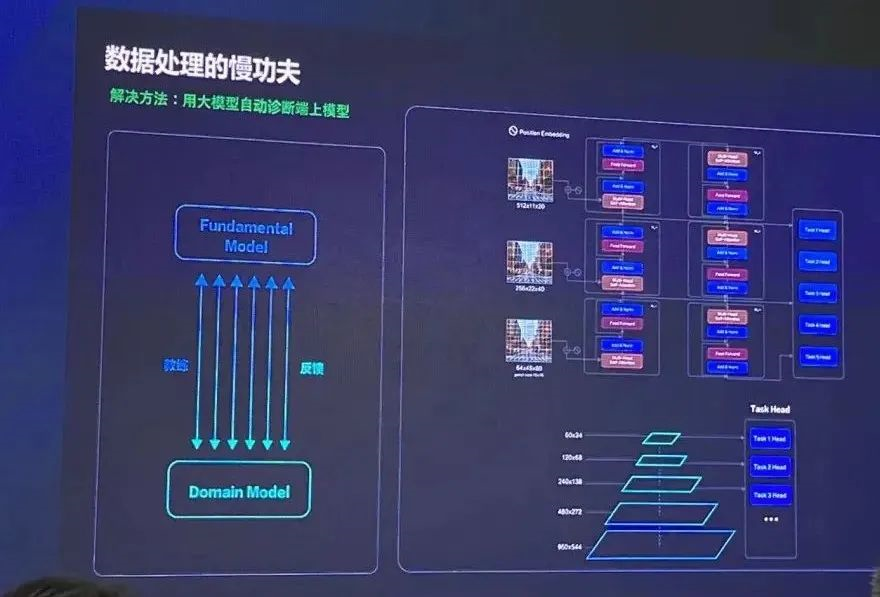
“The decision-making path of the MANA (Hozon Intelligent Data System Xuehu Perception System) perception system is to simulate various solutions of the human brain, including the habit decisions of different drivers, and then learn a large proportion of data consistently. The feedback that this system can currently obtain is also automatically learned, including the corresponding decision-making model developed due to the driving style of the driver.” Pan Xing said that at present (end of August), MANA has accumulated 300,000 hours of learning time, which is equivalent to 40,000 years of driving experience for human beings.
Two months ago, this data was nearly 240,000 hours and 2,000 years of virtual driving experience.
In addition, both Hozon and XPeng have begun to build iterative hardware systems.
On August 2nd, XPeng Motors announced that it had jointly established an automatic driving smart calculation center “Fuyao” with Aliyun in Ulanqab, with a computing power of up to 600PFLOPS, which can reduce the training speed of automatic driving models from 7 days to within 1 hour. Currently, “Fuyao” is being used for the algorithmic model training of XPeng City NGP.
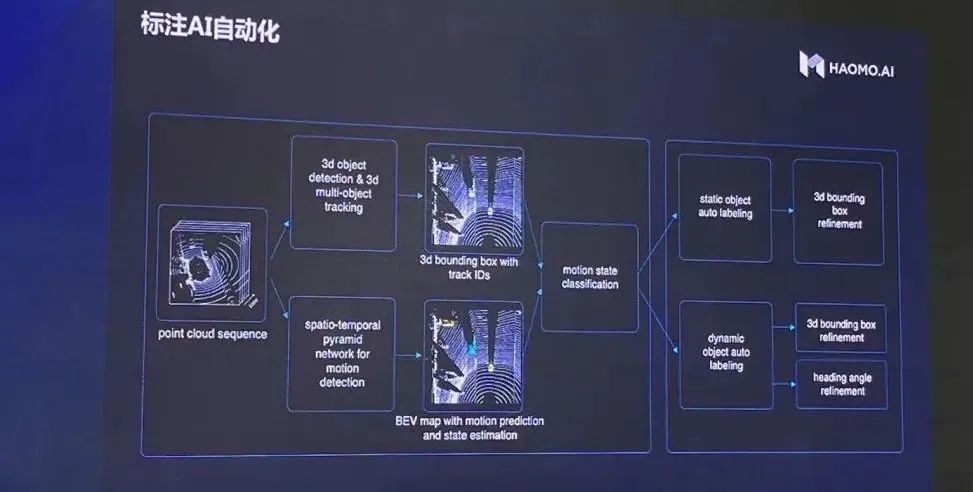
Hozon also uses Aliyun’s “Feitian Intelligent Computing Platform” to achieve 128-card parallel efficiency of over 96%, reducing the cost of training automatic driving models by 62% and increasing the training speed by 110%.
Wei Pai’s Second Upward Window
For Hozon, the Mocha DHT-PHEV LiDAR version is another milestone on its intelligent driving journey; but for Wei Pai, this will be a rare second upward window for the brand.
“The route of Wei Pai’s high-end brand will not change, and the place where the future market (high-end) victory is determined must be the top of the pyramid. In my opinion, it is the smart city navigation system.” Wei Pai CMO Qiao Xinyu told “Electric Vehicle Observer.”Although WEY entered the DHT hybrid race very early, compared with competitors such as BYD, only 5% of Lemon DHT’s scenarios can make users feel its technical advancement. However, the advanced nature of urban navigation is highly perceptible to users and also conforms to the new golden decade of development for intelligent automobiles in the future.
“In the future, this system (urban NOH) will only be used in our flagship models.”
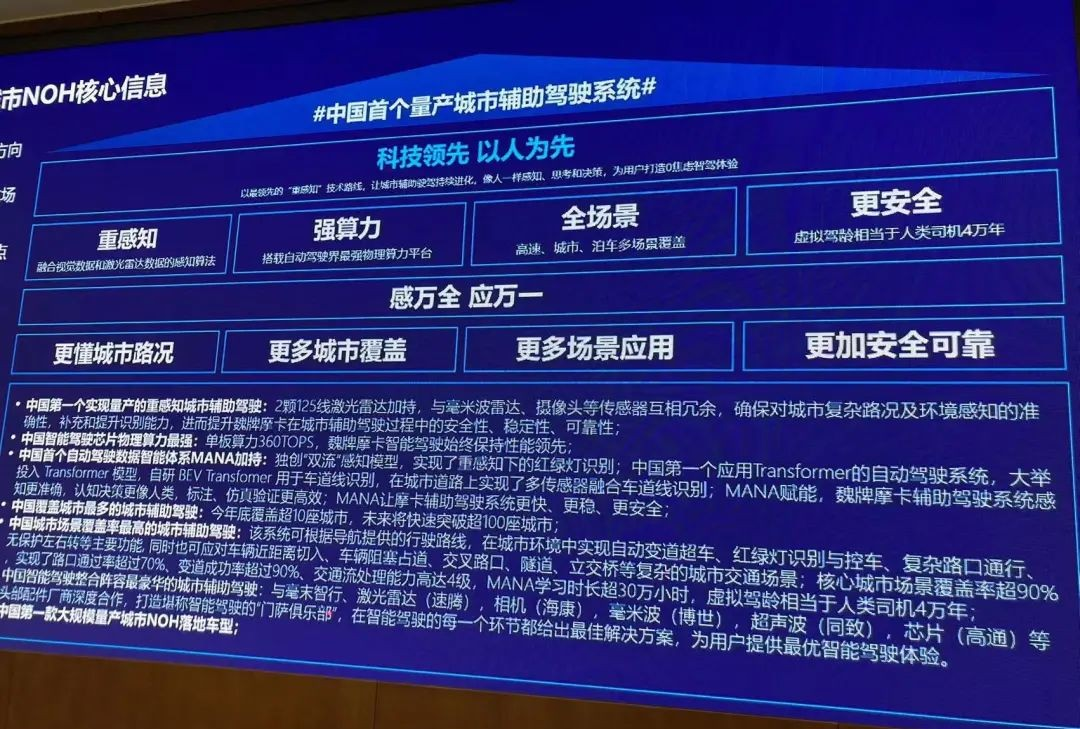
However, Qiao Xinyu also soberly stated that applying high-end technology does not necessarily mean you will succeed in brand and sales. While introducing mass production of urban NOH, WEY is also undergoing deep changes in pricing, sales and user operations.
First is reasonable pricing. Starting with the Latte DHT, WEY has adjusted its pricing system, and future products including cars will be more in line with the perceived value of the brand.
Second is channel. On the basis of the existing dealer network, WEY will add the mode of city showrooms, bringing products to consumers.
Third is user operation, achieving a quick response to users through system coordination.
“We will do our best to address the factors that affect sales, and in the future industry positioning, Urban NOH completes the last piece of the puzzle for WEY’s high-end brand.” Qiao Xinyu said.
This article is a translation by ChatGPT of a Chinese report from 42HOW. If you have any questions about it, please email bd@42how.com.
